Restrictions for Asymmetric Lease for DHCPv4 Relay
-
Asymmetric lease is supported only for the DHCP relay agent. It is not applicable to DHCP Server.
-
When there is a failover from Active to Standby RP on the short lease configured relay agent, the short lease data is lost, and the relay agent only forwards DHCP messages.
-
Liveness detection of clients by the relay agent is not supported.
-
Notifications to server by relay agent about inactive clients is not supported.
-
The server allotted T1 or T2 values should not be zero and the configured short lease value must be less than server allotted T1 value.
-
The minimum short lease value on DHCP relay agent must be 60 seconds.
-
Clients connected before activating short lease on relay come outside the purview of this feature. Clients connected after activation will be the short lease clients.
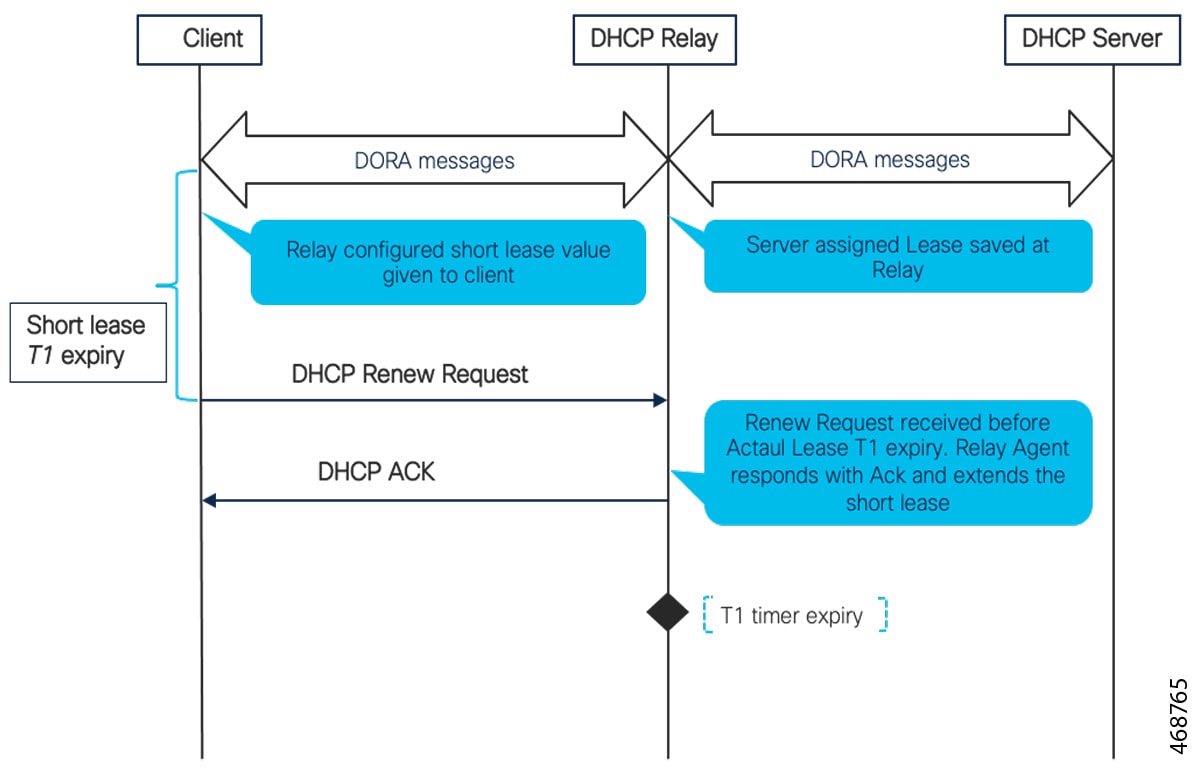
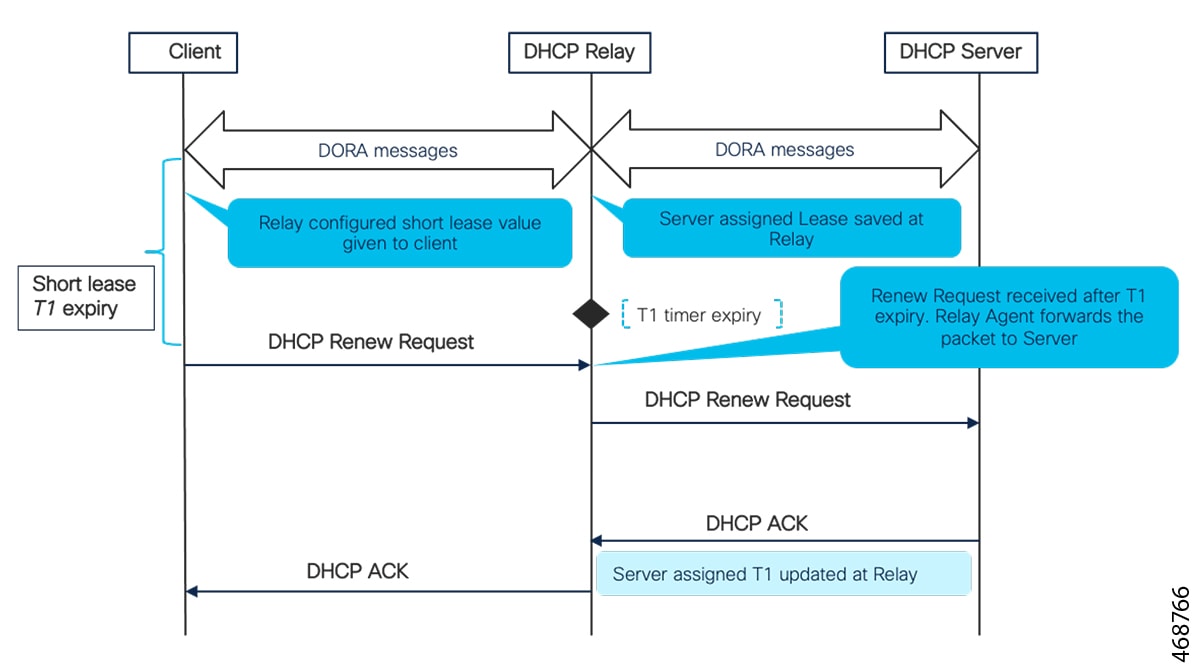
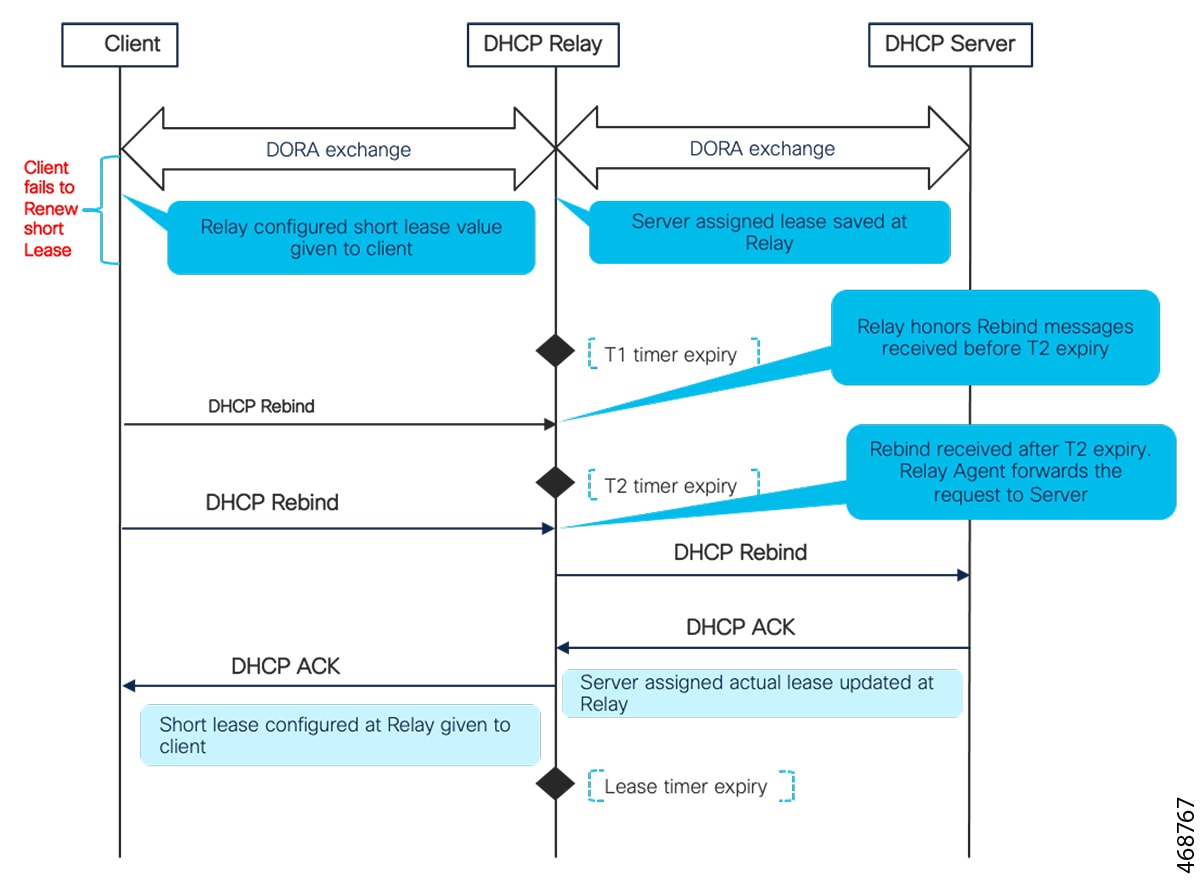
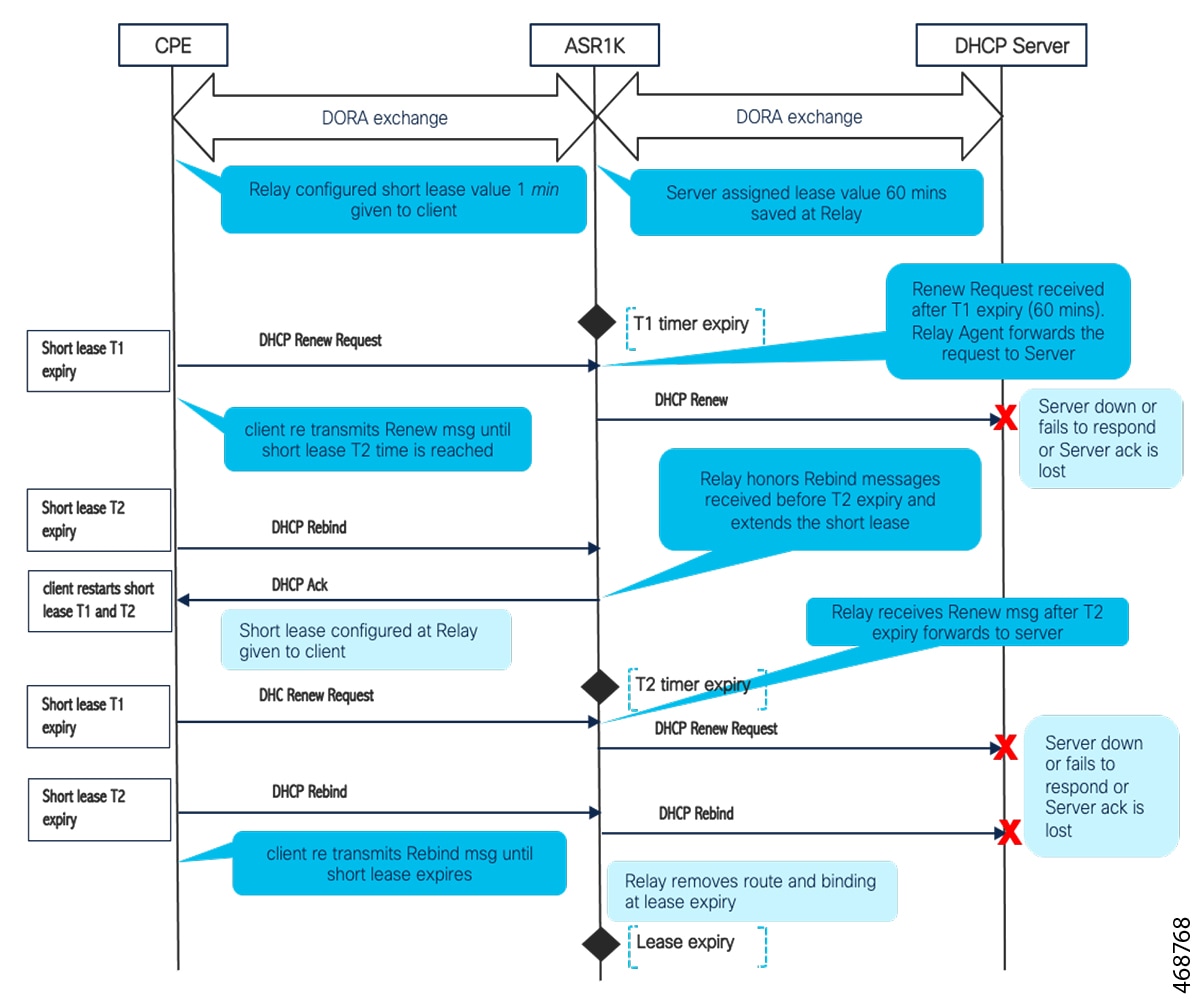
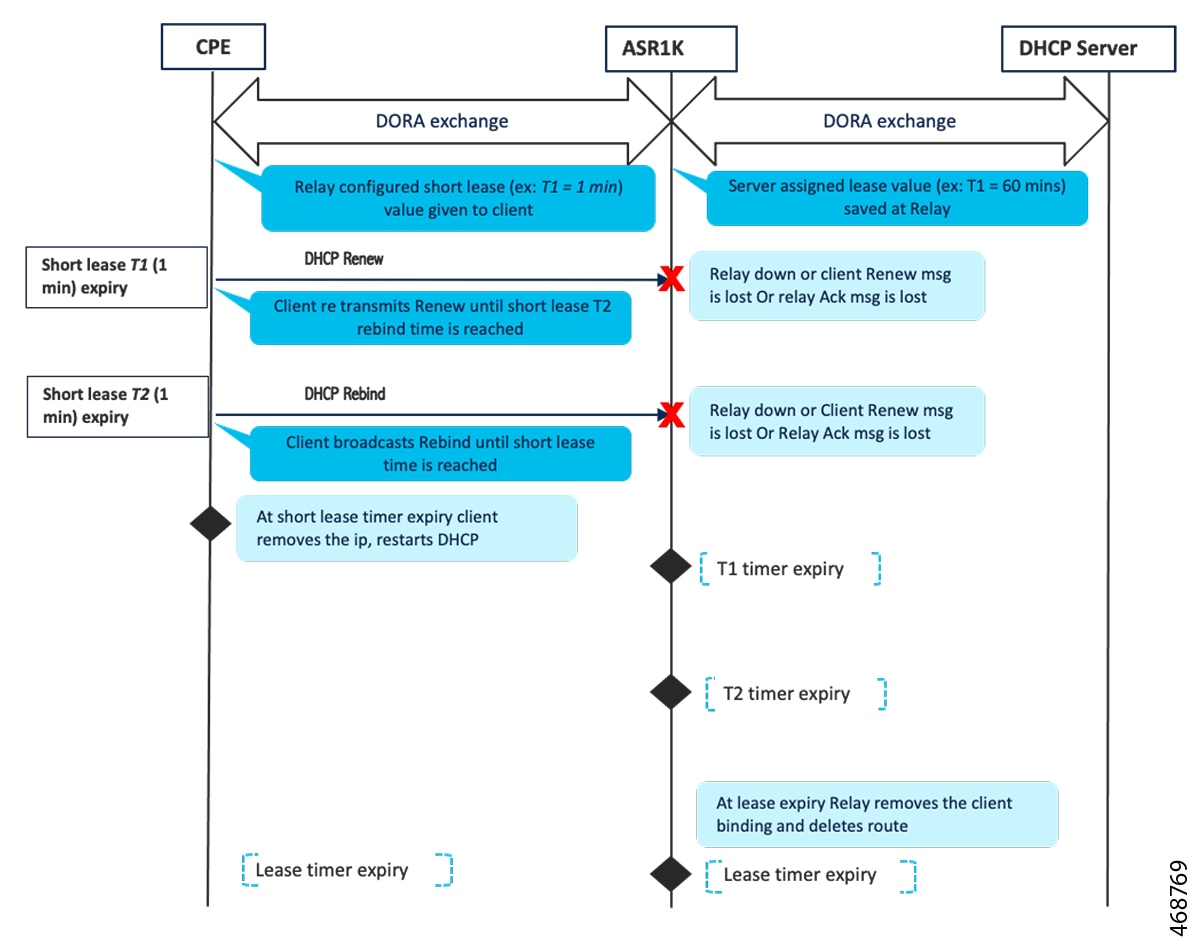

 Feedback
Feedback